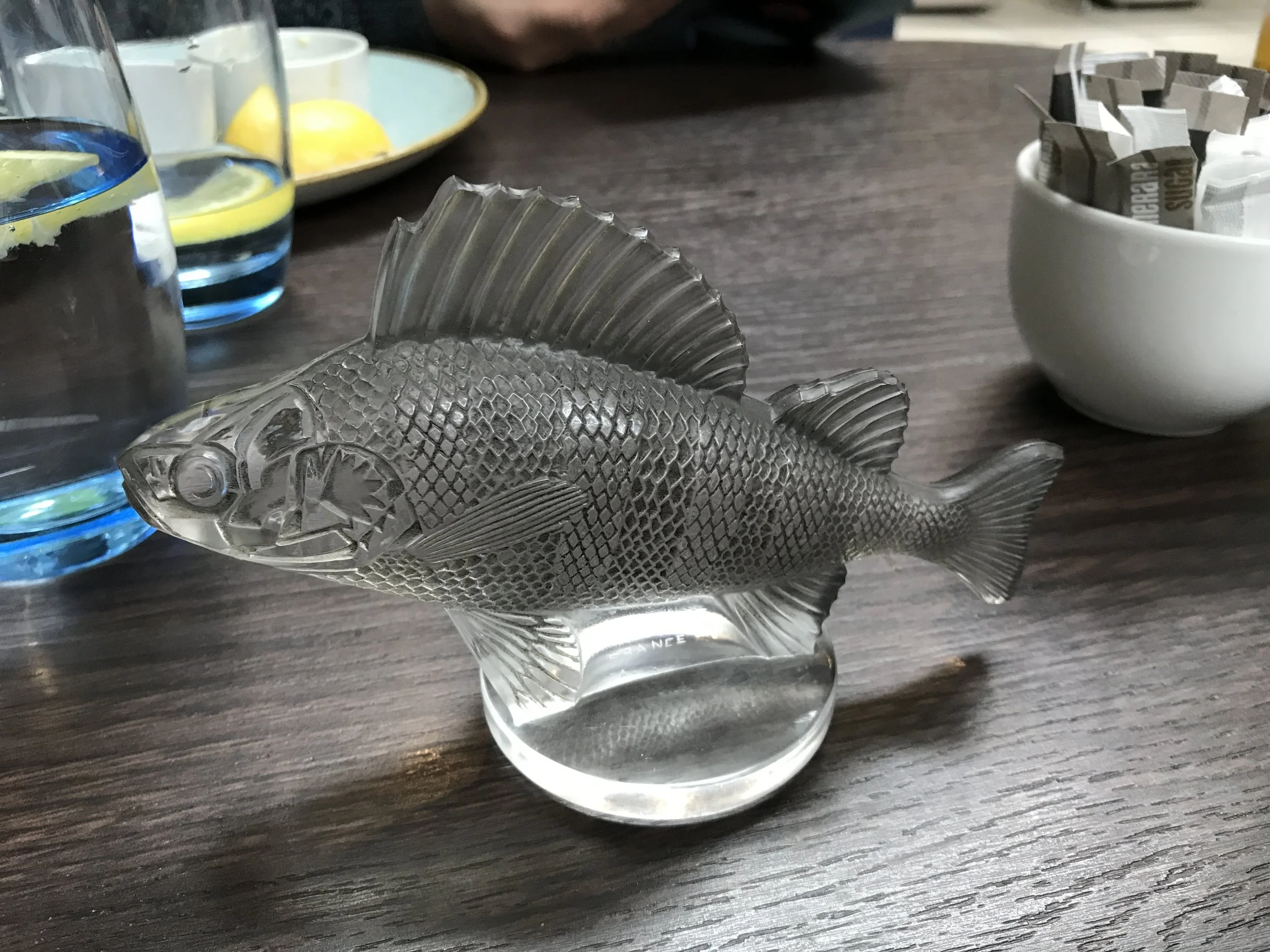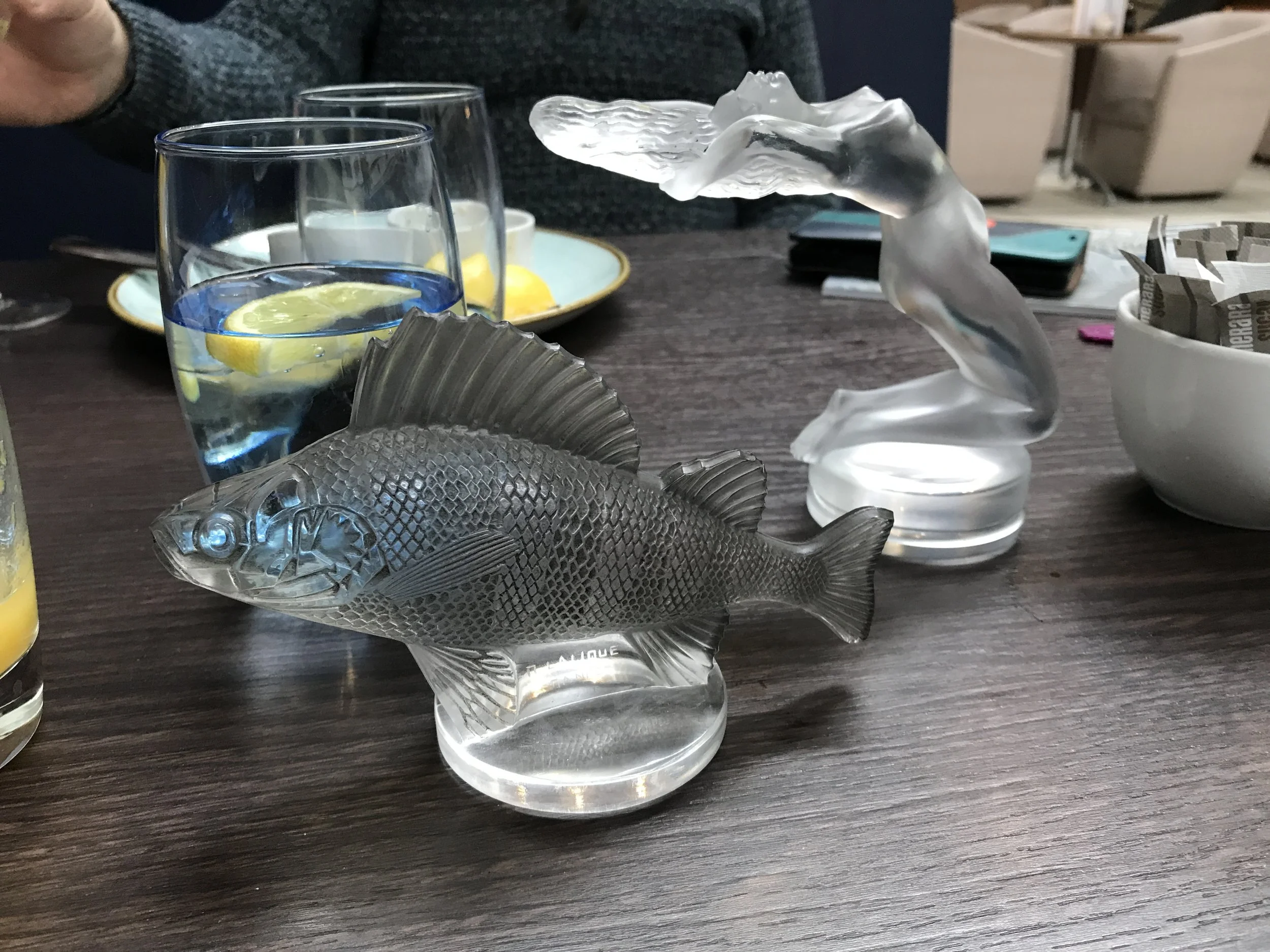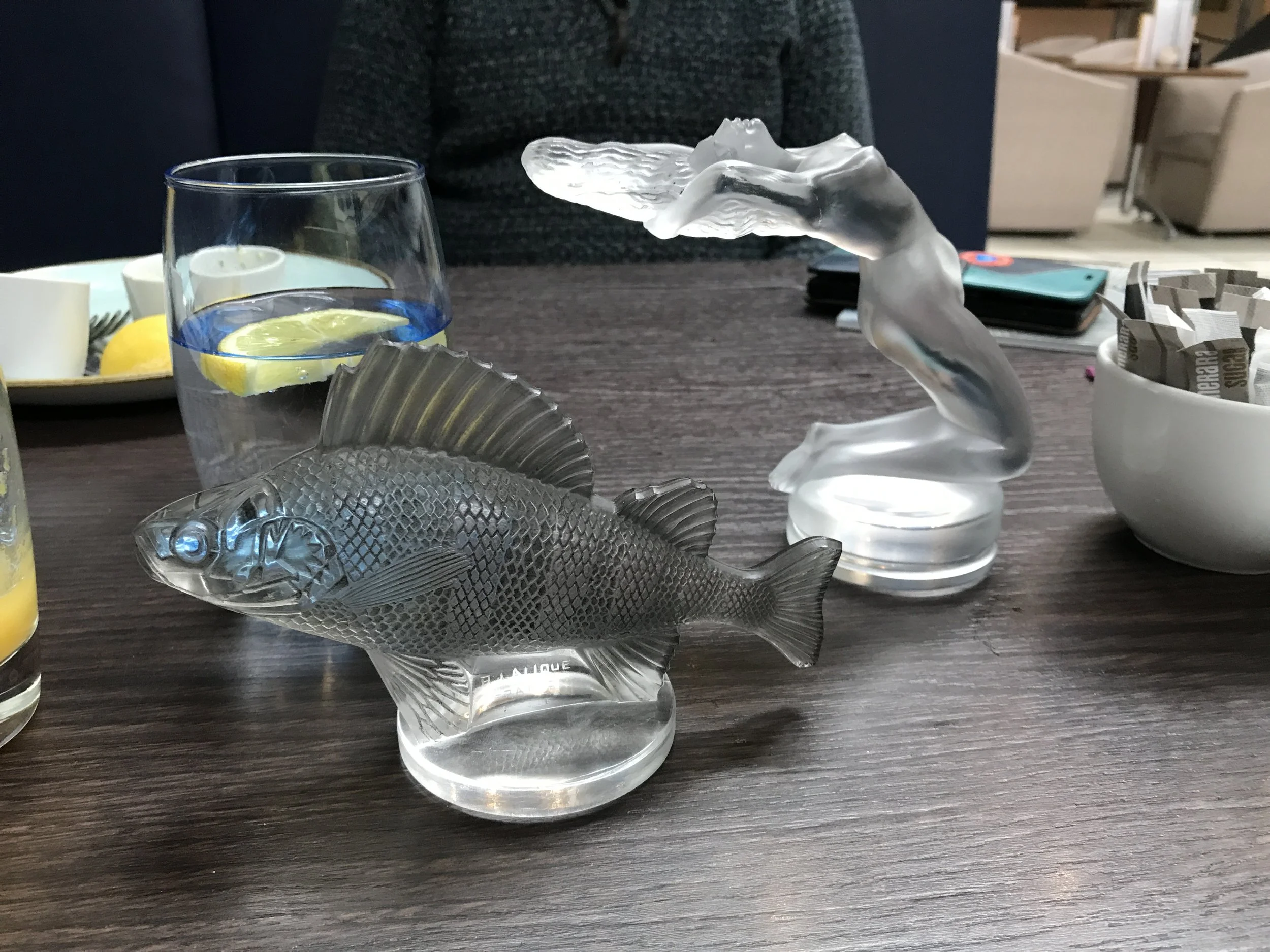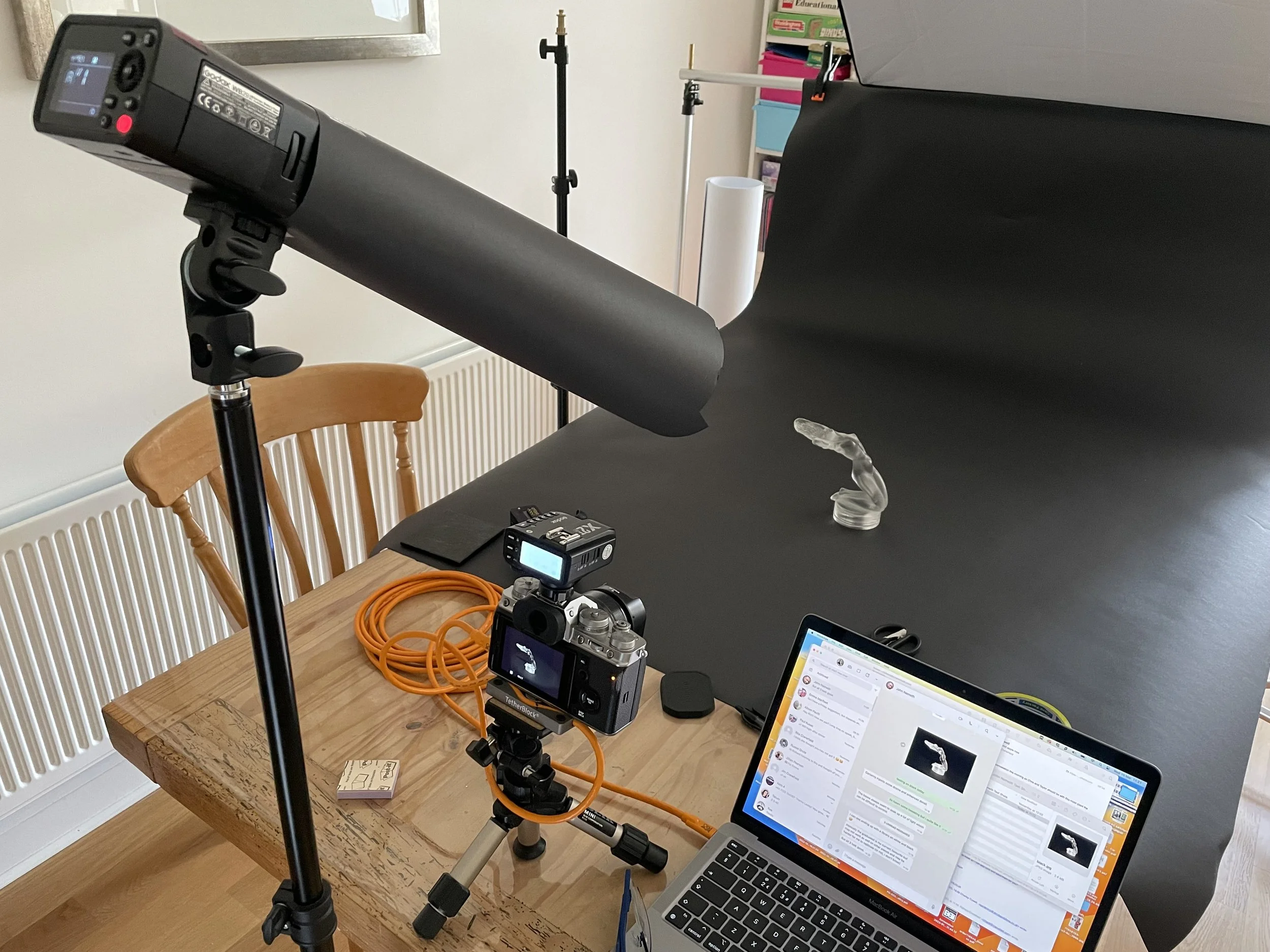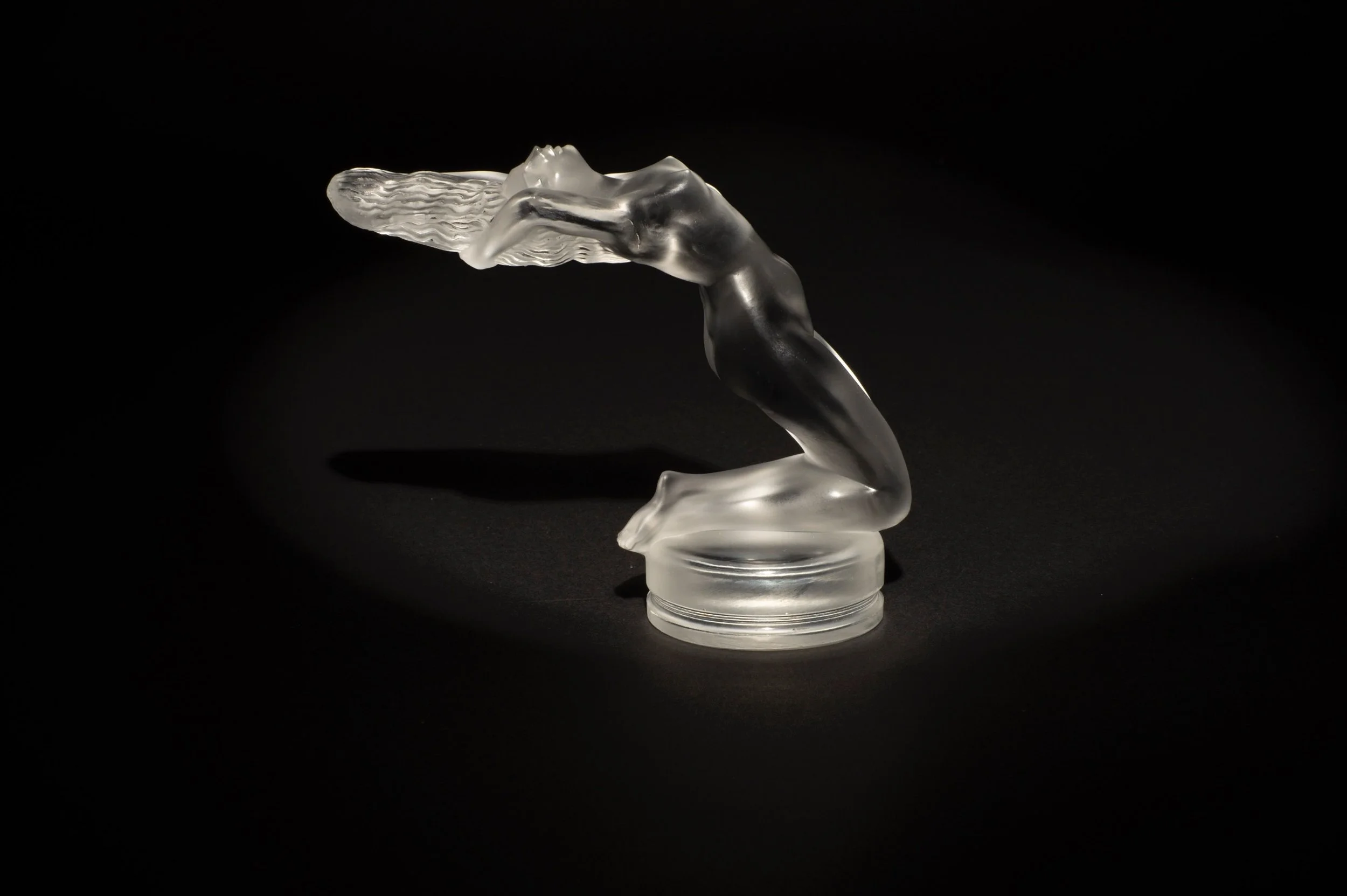Lalique Antique Glass
René Jules Lalique (6 April 1860 – 1 May 1945) was a French jeweller and glass designer known for his creations of glass art, perfume bottles, vases, jewellery, chandeliers, clocks, and automobile hood ornaments.
The hood ornaments, also known as bouchons de radiateur, radiator caps or simply mascottes, were mostly designed and created by Lalique in the mid to late 1920s before fading from high fashion in the early 1930s. It is amazing to think that such extravagant yet seemingly fragile items once adorned the front of equally ostentatious cars.
In April 2023 I was commissioned by a private collector of the Lalique hood ornaments to create a photographic catalogue of the collection. Some of the images would be used to sell items from the collection, the other images would be used for a website documenting the collection.
For both use cases, it was important that the details and colour of the pieces were captured accurately. As hood ornaments these rare glass pieces have had exposure to the elements giving them all a unique patina with varying degrees of weathering and colouration.
I was first introduced to the glassware when I met the collector in a hotel in Reading - midway between his house and mine. The pieces were an extraordinary contradiction of beauty and strength. Delicately crafted, made of glass, yet hefty and strong enough to withstand being mounted on the front of cars during what many would define as the golden age of motoring.
I felt a little nervous borrowing the pieces but needed to use them for a series of test shoots before we photographed the whole collection. After a lovely lunch and a brief history lesson I carefully put them back in their box and bubble wrap, rested the thousands of pounds worth of antique glass in my van, and headed home.
The collection to be photographed was made up of nearly 100 distinct pieces, all made from varying types of glass: clear, opal, tinted… The borrowed pieces, a £1,100 ‘Perche’ from 1929 and a 1931 ‘Chrysis’ valued at about £3,500, came home with me to test various lighting set-ups in my Kitchen Studio.
The tests included trials of different backdrops to see whether white or black would be best for the archive, and to see how light was reflected or refracted by the artefacts. Differing set-ups could, I thought, change whether light just bounced off the pieces or whether it appeared to magically glow from within them.
‘Chrysis’ test on white; rear soft box
‘Perche’ test on white; silver bounce reflector
I designed, but never got around to building, a flash set-up that would have used the uniform size of the base of each piece to direct all of the light up into the artefact and have it glow from within.
Concept sketch for under table uplighting for Lalique hood ornaments
Through testing it was clear that a variety of set-ups would be needed depending on the backdrop and the glass. A white backdrop rendered a nice clean image perfect for the catalogue, but care needed to be taken as to what appeared to be reflected in the objects from their surroundings.
A black backdrop created wonderful, high-contrast images that would be good for coloured and opal glass but I didn’t like the reflection caused by the curve at the rear of the backdrop. I managed to create a clearer image with the use of a long ‘snoot’ made from an offcut of backdrop paper to target the object and reduce light spill everywhere else.
Snooted flash to reduce backdrop reflections
‘Chrysis’ test on black, softbox
‘Chrysis’ test on black, improvised long snoot
With a day of testing in the bag the actual shoot worked like clockwork. With the studio setup from my kitchen replicated in Oxford we ran through close to 90 items carefully documenting each one in totality but also with closeups of distinct features pertaining to colour, wear, and etching. It was decided to shoot the entirety of the collection against white to deliver a light grey background to all pieces. Some coloured or opal objects were shot on black to emphasise their tone.
Images were shot on a Fujifilm X-T4 using a XF80mmF2.8 R LM macro lens and XF50mm f2 R WR. Correct colour rendering was ensured using X-Rite test charts and calibration software.
To view the full collection and find out more about these exquisite piece of art check out www.rlaliquemascots.com

